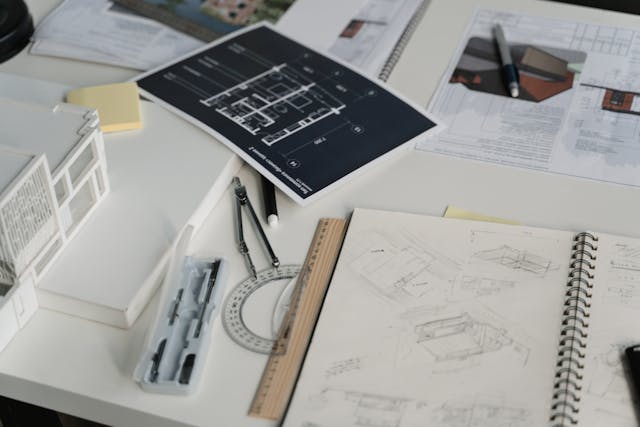Custom lapel pins are a fantastic way to express creativity, commemorate special events, represent a brand, or celebrate a personal achievement. Whether you’re designing a custom lapel pin for your company, a special occasion, or a personal project, creating a design that truly stands out requires a blend of creativity, technical knowledge, and attention to detail. With the right approach, your custom lapel pins can become cherished keepsakes, powerful marketing tools, or stylish accessories that people will be proud to wear.
In this comprehensive guide, we’ll explore nine essential tips to help you unlock your creativity and design custom lapel pins that are both visually striking and meaningful. Whether you’re a seasoned designer or a beginner looking to try your hand at creating custom lapel pins, these tips will guide you through the process and help you create a pin that leaves a lasting impression.
1. Start with a Clear Concept and Purpose
Before you begin the design process, it’s crucial to have a clear understanding of the concept and purpose behind your custom lapel pins. Knowing why you’re creating the pin and what you want it to represent will guide your design decisions and ensure that the final product aligns with your goals.
Key Questions to Consider:
- What is the purpose of the pin? Is it for a corporate event, a fundraiser, a team celebration, or personal use? Understanding the purpose will help you determine the tone and style of the design.
- Who is the target audience? Consider who will be wearing the pin and what design elements will appeal to them. A pin designed for a professional conference might have a different look and feel than one created for a youth sports team.
- What message or story do you want to convey? Think about the message or story you want your pin to communicate. Whether it’s promoting a cause, celebrating an achievement, or simply adding a touch of fun, the design should reflect that intention.
Starting with a clear concept and purpose will help you stay focused throughout the design process and create a custom lapel pin that resonates with its intended audience.
2. Sketch Your Ideas and Experiment with Concepts
Once you have a clear concept in mind, it’s time to start sketching your ideas. Sketching allows you to explore different concepts, experiment with layouts, and visualize how your design will look as a custom lapel pin.
Tips for Sketching and Concept Development:
- Start with Simple Shapes and Icons: Begin by sketching simple shapes, icons, and symbols that relate to your concept. For example, if you’re designing a pin for an environmental campaign, you might start with sketches of leaves, trees, or the Earth.
- Experiment with Different Layouts: Play around with different layouts and compositions. Consider how the elements will be arranged on the pin, and experiment with various placements until you find a layout that feels balanced and visually appealing.
- Focus on Proportions: Keep in mind that custom lapel pins are typically small, so it’s important to focus on proportions. Avoid overcrowding the design with too many details, and make sure that each element is clearly defined.
- Create Multiple Variations: Don’t settle on the first idea that comes to mind. Create multiple variations of your design, each with slight adjustments in style, layout, or elements. This will give you a range of options to choose from and help you refine your concept.
Sketching is an essential part of the creative process, allowing you to explore your ideas and develop a design that works well as a custom lapel pin.
3. Choose the Right Shape and Size
The shape and size of your custom lapel pin play a significant role in its overall design and impact. The right shape and size can enhance the visual appeal of the pin and make it more functional and wearable.
Considerations for Shape and Size:
- Standard Shapes vs. Custom Shapes: Custom lapel pins can be made in standard shapes, such as circles, squares, or rectangles, or custom shapes that follow the contours of your design. Custom shapes are more unique and can make your pin stand out, but they may also require more complex production processes.
- Size Matters: The size of the pin will affect how much detail you can include in the design. Smaller pins (around 0.75 to 1 inch) are more subtle and easier to wear, while larger pins (1.25 to 2 inches) offer more space for detailed designs but may be more noticeable when worn.
- Functionality: Consider the functionality of the pin when choosing its size and shape. Pins with irregular shapes or sharp edges may be less comfortable to wear, while simpler shapes are generally more versatile and wearable.
- Proportions and Balance: Ensure that the proportions of your design work well with the chosen shape and size. For example, a circular design may work well for logos or icons, while a rectangular shape might be better for designs with text.
Choosing the right shape and size is crucial for creating a custom lapel pin that is both visually appealing and practical for everyday wear.
4. Select the Appropriate Colors
Color is one of the most important elements of any design, and it plays a crucial role in the overall look and feel of your custom lapel pin. The right color choices can make your pin more vibrant, eye-catching, and meaningful.
Tips for Choosing Colors:
- Use a Limited Color Palette: Since custom lapel pins are small, it’s important to use a limited color palette to avoid overwhelming the design. Stick to a few key colors that complement each other and reinforce the overall concept.
- Consider Color Symbolism: Colors often carry symbolic meanings, so consider how your color choices align with the message you want to convey. For example, green is often associated with nature and sustainability, while blue can represent trust and professionalism.
- Contrast and Visibility: High contrast between colors can make your design more visible and easier to distinguish from a distance. For example, pairing a light color with a dark color can help important elements stand out.
- Metallic Finishes: Many custom lapel pins use metallic finishes, such as gold, silver, or bronze, as part of the design. Consider how these finishes will interact with the colors in your design and how they will affect the overall aesthetic.
- Test Different Combinations: Experiment with different color combinations to see which ones work best for your design. You can use design software to create digital mockups and test how different colors look together.
By carefully selecting the colors for your custom lapel pin, you can create a design that is visually striking and communicates the desired message effectively.
5. Incorporate Meaningful Symbols and Icons
Symbols and icons are powerful tools for conveying meaning in a compact and visually engaging way. Incorporating meaningful symbols into your custom lapel pin design can help communicate your message more effectively and make the pin more memorable.
Tips for Using Symbols and Icons:
- Choose Universal Symbols: Universal symbols, such as hearts, stars, or arrows, are easily recognized and understood by a wide audience. These symbols can be effective in conveying a message quickly and clearly.
- Create Custom Icons: If your pin represents a specific organization, event, or cause, consider creating custom icons that are unique to your design. Custom icons can add a personal touch and make the pin more distinctive.
- Use Icons to Reinforce the Theme: Icons should align with the overall theme and concept of your pin. For example, if you’re designing a pin for a sports team, you might include symbols like a ball, trophy, or mascot to reinforce the sports theme.
- Keep It Simple: Since custom lapel pins are small, it’s important to keep your symbols and icons simple and easily recognizable. Avoid overly complex designs that might become difficult to discern when scaled down.
- Combine Icons Creatively: Consider combining multiple icons in a creative way to tell a story or convey a more complex message. For example, you could merge a globe and a handshake to symbolize international cooperation.
Incorporating meaningful symbols and icons into your design can add depth and significance to your custom lapel pin, making it more impactful and memorable.
6. Use Text Wisely
Text can be an important element of your custom lapel pin design, especially if you want to include a name, slogan, date, or other important information. However, because custom lapel pins are small, it’s essential to use text wisely to ensure that it is legible and doesn’t overwhelm the design.
Tips for Using Text:
- Keep It Short and Sweet: Since space is limited, keep your text short and concise. Focus on the most important words or phrases, and avoid including too much text that could make the design feel cluttered.
- Choose Readable Fonts: Select fonts that are easy to read at a small size. Sans-serif fonts are often a good choice because they are simple and legible. Avoid overly decorative or script fonts that might be difficult to read on a small pin.
- Consider Font Size and Placement: The size and placement of your text are crucial for legibility. Ensure that the text is large enough to be read easily and that it is placed in a clear, unobstructed area of the design.
- Align Text with the Design: The style of the text should complement the overall design. For example, a modern, sleek font might work well with a contemporary design, while a classic serif font might be better suited for a vintage-style pin.
- Use Text to Add Meaning: Consider using text to add a meaningful message, such as a date, event name, or motivational slogan. This can enhance the emotional significance of the pin and make it more memorable.
By using text wisely and thoughtfully, you can enhance the design of your custom lapel pin and ensure that important information is communicated clearly.
7. Consider Different Finishes and Effects
The finish and effects applied to your custom lapel pin can dramatically affect its appearance and overall impact. Different finishes can add texture, shine, and dimension to your design, making the pin more visually appealing and tactile.
Types of Finishes and Effects:
- Hard Enamel vs. Soft Enamel: Hard enamel pins have a smooth, polished finish, while soft enamel pins have recessed areas that create a textured effect. Hard enamel is more durable and has a high-quality appearance, while soft enamel offers more depth and contrast.
- Metal Plating: The metal plating on your pin can be customized with different finishes, such as gold, silver, bronze, or black nickel. Each finish gives the pin a distinct look and feel, so choose the one that best complements your design.
- Antique and Distressed Finishes: Antique finishes give the pin a vintage or aged look, adding character and a sense of history. Distressed finishes can create a weathered, rugged appearance that works well for certain themes.
- Glitter and Glow-in-the-Dark: Adding glitter or glow-in-the-dark effects can make your pin stand out and add a playful, eye-catching element to the design. These effects are especially popular for pins aimed at younger audiences or for special events.
- 3D Molded and Die-Cast: For a more sculptural look, consider using 3D molded or die-cast techniques to create raised or recessed areas on the pin. This adds depth and texture, making the pin more dynamic and tactile.
Experimenting with different finishes and effects allows you to create a custom lapel pin that is not only visually striking but also engaging to touch and hold.
8. Work with a Professional Manufacturer
Designing a custom lapel pin is an exciting creative process, but bringing your design to life requires the expertise of a professional manufacturer. Partnering with the right manufacturer can make all the difference in the quality and execution of your final product.
Tips for Choosing a Manufacturer:
- Research and Compare: Take the time to research and compare different manufacturers. Look for companies with experience in producing custom lapel pins and a portfolio that showcases their work.
- Request Samples: Before committing to a manufacturer, request samples of their previous work. This will give you a better understanding of the quality of their pins and the materials they use.
- Discuss Customization Options: Make sure the manufacturer offers a wide range of customization options, including different shapes, sizes, finishes, and effects. The more options available, the more creative freedom you’ll have in your design.
- Review the Production Process: Ask about the manufacturer’s production process, including lead times, quality control measures, and communication during the project. A transparent and efficient process is key to a successful partnership.
- Check Reviews and References: Read reviews and testimonials from other clients to get a sense of the manufacturer’s reliability and customer service. If possible, ask for references and speak to other clients directly.
Working with a professional manufacturer ensures that your custom lapel pin is produced to the highest standards of quality and that your design vision is realized.
9. Think About Packaging and Presentation
The packaging and presentation of your custom lapel pin are just as important as the design itself, especially if the pin is intended as a gift, promotional item, or commemorative keepsake. Thoughtful packaging can enhance the overall experience and make your pin even more special.
Tips for Packaging and Presentation:
- Use Custom Packaging: Consider creating custom packaging that complements the design of the custom lapel pin. This could include branded boxes, pouches, or backing cards that feature your logo or design elements.
- Include a Personal Touch: Adding a personal touch, such as a handwritten note, a thank-you card, or a certificate of authenticity, can make the recipient feel valued and appreciated.
- Display the Pin Beautifully: Think about how the pin will be displayed within the packaging. Using foam inserts, velvet lining, or custom cutouts can help secure the pin and showcase it beautifully when the package is opened.
- Consider Eco-Friendly Options: If sustainability is important to your brand or project, consider using eco-friendly packaging materials, such as recycled paper, biodegradable plastics, or reusable pouches.
- Highlight the Story: Use the packaging to tell the story behind the pin. Including a brief description of the pin’s significance, the inspiration behind the design, or the cause it supports can add depth and meaning to the presentation.
By putting thought into the packaging and presentation of your custom lapel pin, you can create a memorable and impactful experience that enhances the value of the pin itself.
Create Custom Lapel Pins That Stand Out
Designing custom lapel pins is an exciting opportunity to unlock your creativity and create something truly unique. By following these nine essential tips—starting with a clear concept, experimenting with designs, choosing the right shape and size, selecting appropriate colors, incorporating meaningful symbols, using text wisely, considering finishes and effects, working with a professional manufacturer, and thinking about packaging and presentation—you can create custom lapel pins that stand out and make a lasting impression.
Whether your custom lapel pins is meant to celebrate a special occasion, promote a brand, or simply express your artistic vision, these tips will help you bring your ideas to life and create a pin that people will be proud to wear and display. So, unleash your creativity, dive into the design process, and enjoy the satisfaction of creating a custom lapel pin that is truly one-of-a-kind.
If you are interested in some custom lapel pins, feel free to contact us at 1-855-471-6752 or fill out one of our FREE QUOTE FORMS.








